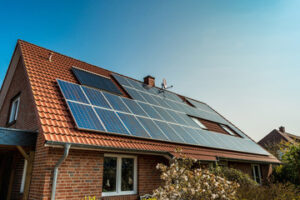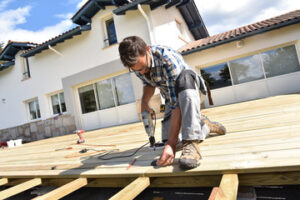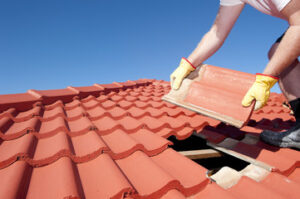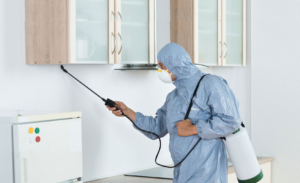A solar company is the business that installs, maintains, and sells solar energy systems. These companies also provide financing and may offer tax incentives.
Solar companies typically offer a contract to customers that includes warranties and terms of service. It’s important to read these contracts carefully and request a hard copy, if possible. Visit Website to learn more.

1. Reduced Utility Bills
Some states offer rebates or tax credits to help offset the cost of installing solar panels. This makes it easier to afford a solar energy system, and can also lower your monthly utility bills. Other incentives, such as a power-production guarantee, may be included in your contract. Make sure you understand the terms of these contracts, including any upfront costs and the term. The longer the term, the better – it can reduce your initial outlay and ensure you receive the benefits of solar power for years to come.
When choosing a solar company, choose a business that is licensed and insured. This can protect you from shady contractors who may do shoddy work. In addition, look for a company that provides customer service and support after the installation. This is important because if you have issues with your solar energy system, you want to be able to contact someone who can resolve the problem quickly.
If you decide to buy a solar energy system, consider whether it will increase the value of your home. Some research shows that homes with solar systems sell faster and at a higher price than similar non-solar homes. This benefit may not be available if you lease or PPA your system, as these contracts do not transfer to a new homeowner.
Keep in mind that electricity rates are rising in most regions of the country. Going solar is an excellent way to hedge against rising energy prices.
Many reputable solar companies provide a variety of financing options. The best financing is based on your energy usage, your utility rates, the positioning and design of your home, the condition of your roof, and your state’s incentives.
Be wary of any solar company that insists on an up-front down payment or that does not give you a full disclosure statement before you sign a contract. In addition, avoid companies that promise to eliminate your utility bill, and especially if they are not transparent about how they will do this. If you have questions or concerns, you can file a consumer complaint with the Office of the Attorney General (OAG). Consumer complaints are useful for resolving issues and identifying questionable companies.
2. Tax Credits
The federal Investment Tax Credit (ITC) is one of the most important incentives for homeowners to invest in solar energy. It’s currently worth 30% of the total cost of a solar system and can be carried over for five years. During this time, it’s crucial that solar companies work hard to ensure that customers are aware of the tax credits available to them.
Aside from the ITC, states often offer additional rebates and incentives that can help consumers save money. These can be in the form of sales tax exemptions or property taxes reductions that are tied to net metering. Some states, like New York, have particularly attractive incentives. This is partly due to the state’s progressive Renewable Portfolio Standard goals that call for 50% of the state’s energy to come from renewable sources by 2030.
Homeowners can claim the ITC by filling out IRS Form 5695 and submitting the required documentation along with their federal income tax return. The credit is only available for residential use, and the solar panels must be installed and in operation to qualify. The homeowner must own the solar panel system, as the ITC isn’t available to homeowners who lease their systems through third-party companies like Mosaic.
Another consideration is that the solar system must be used exclusively for home energy generation. It can’t be used for commercial or agricultural energy, and the ITC only applies to new installations. Aside from these limitations, the credit is still a great incentive for homeowners to go solar.
As the industry continues to grow, it’s essential for solar companies to develop a well-rounded strategy that puts value above the need to be the least expensive alternative. Doing so lowers customer risk and fosters enduring trust. It also helps to sustain robust profit margins that protect cash flow and enable the company to provide top-notch service.
Lastly, a solar company should be willing to answer questions from customers about the product they are selling. This shows that the company has a genuine interest in helping its clients save money. It will also be more likely to handle warranty claims quickly and efficiently, reducing the amount of time and hassle that customers will need to spend on these issues.
3. Increased Home Value
Many homeowners install solar energy systems because of the cost-saving benefits, but a growing number also see a home value increase as an added bonus. A 2019 study by Zillow found that homes with solar power sell at a premium of 4.1% on average, and even higher in some cities.
The increase in home value depends on a variety of factors, including the size and quality of the solar system, energy usage and rates, the condition of the roof, and geographic location. In addition, homeowners need to realize that a solar power system does not completely offset their utility costs and they will still have a connection to the grid.
To maximize the value of their solar investment, homeowners should work with a solar company that uses high-quality equipment and offers a strong warranty. A solar company’s track record is also important, as homeowners should look for an installer with a low customer-complaint rate and a long history of installing high-quality solar systems.
The best solar companies offer clear and straightforward sales strategies that are respectful of the homeowner’s time and privacy. They do not employ pushy tactics, such as unsolicited door-knocking and aggressive sales pitches. They will also share upfront pricing information and explain the process of getting a quote for a solar system.
Before signing a contract, homeowners should review the terms and conditions with a trusted advisor and be aware of the following:
If a homeowner chooses to purchase a solar energy system, they should understand that they are responsible for paying off the loan or lease regardless of whether they live in the property after selling it. If a homeowner signs a PPA, they should ensure that the terms of their agreement include a power-production guarantee that protects them against losing money if they cannot sell their property in a timely manner. If a solar company is unwilling to provide this assurance, it’s a good idea for homeowners to seek other alternatives.
4. Reduced Carbon Footprint
Solar energy is one of the most environmentally responsible forms of electricity. By switching from fossil fuels to solar, you’ll significantly reduce your carbon footprint. Carbon dioxide emissions contribute to severe natural occurrences like floods, earthquakes, droughts and hurricanes that cause public safety issues. They also trigger climate disasters and accelerate global warming. The only way to slow down climate change is to lower greenhouse gas emissions. Greenhouse gases are caused by the burning of non-renewable fossil fuels and other industrial activities such as mining, processing, transportation and waste management.
By reducing their emissions, businesses can make a significant contribution to a low-carbon future. By implementing solar technology, companies become leaders in the eco-movement and can inspire other organizations to embrace greener energy sources.
Besides producing fewer carbon emissions, solar power is clean, reliable and cost-effective. This is why it’s a top choice for many businesses that want to reduce their carbon footprint and promote a greener lifestyle.
When choosing a solar company, look for one that focuses on customer service and has years of experience. A reputable company will be open to answering any questions you might have about going solar and will offer a variety of financial options. Additionally, they’ll have a good track record with consumer complaints, which helps them address any problems promptly.
You should also look for a solar company that is backed by a national brand, like EnergySage, as this will give you confidence in their reputation. If you’re unsure about any solar companies you’ve seen advertised, check online reviews to find out what other consumers have to say about them.
A great place to start is with a free solar quote from EnergySage. We connect you with multiple solar providers in your area who compete to provide you with custom quotes based on your unique energy needs. To get started, simply fill out our quick and easy form. If you’re looking for more information about what to expect when installing solar panels, visit our solar guide. Once you’ve found a provider that matches your needs, you can choose to have them install your system.






